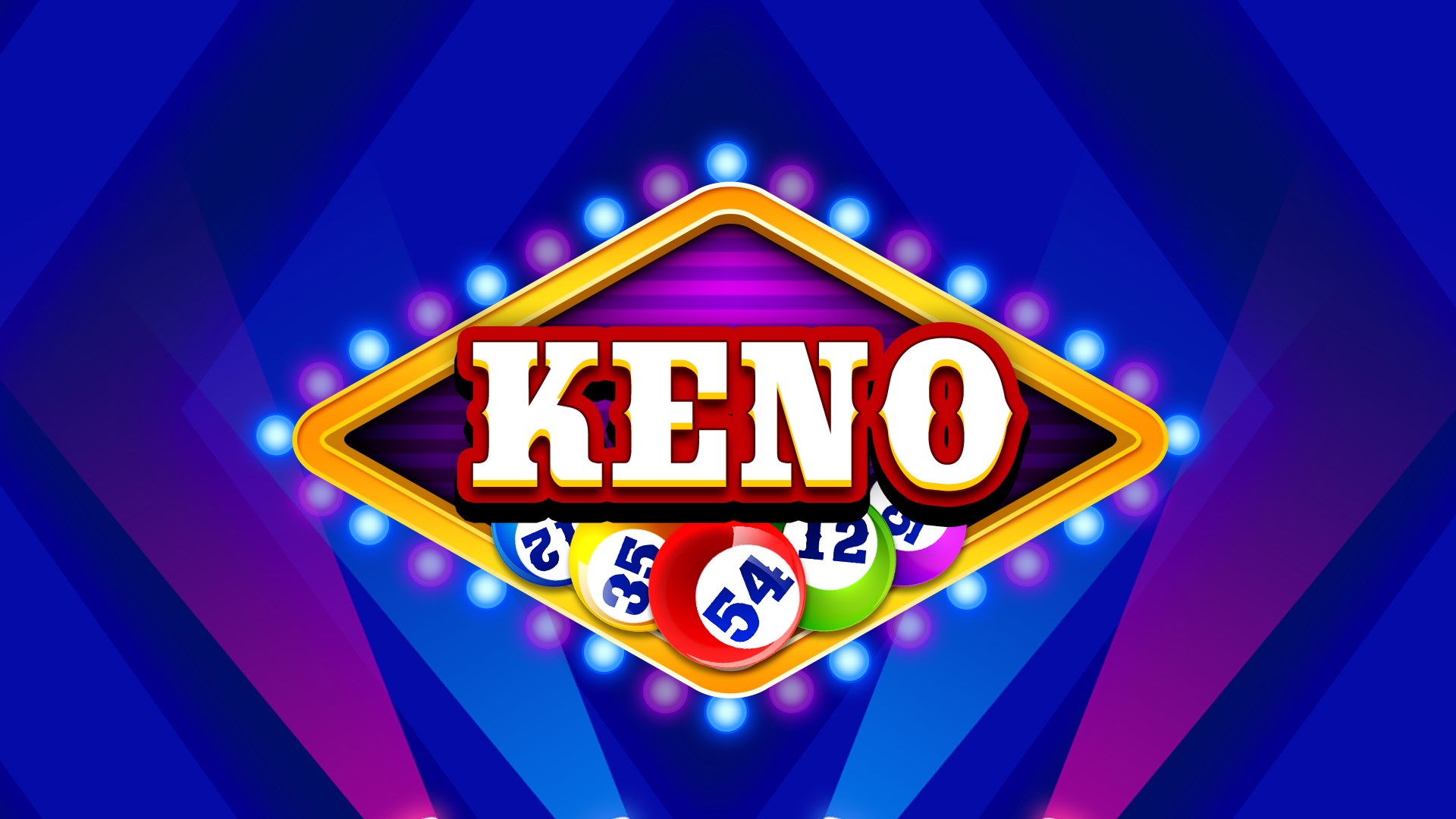Keno Game Lottery
Posted By admin On 10/04/22- Keno Game Lottery Game
- Keno Game Pa Lottery
- Keno Lotto Game
- Keno Game Lottery Powerball
- Best Keno Numbers To Play
Keno/kiːnoʊ/ is a lottery-like gambling game often played at modern casinos, and also offered as a game by some state lotteries.
Keno is a fun, fast-paced game that gives players a chance to win $100,000 or more. Drawings are held every 4 minutes. Keno can be played at any PA Lottery retailer that sells Draw Games and can be watched live, in person, at select retailers. Animations of past draws can found by clicking the Most Recent Draw tab below.
Players wager by choosing numbers ranging from 1 through (usually) 80. After all players make their wagers, 20 numbers (some variants draw fewer numbers) are drawn at random, either with a ball machine similar to ones used for lotteries and bingo, or with a random number generator.
Each casino sets its own series of payouts, called 'paytables'. The player is paid based on how many numbers were chosen (either player selection, or the terminal picking the numbers), the number of matches out of those chosen, and the wager.



There are a wide variety of keno paytables depending on the casino, usually with a larger 'house edge' than other games offered by that casino. The house edge ranges from less than 4 percent[1] to over 35 percent.[2] The typical house edge for non-slot casino games is under 5 percent.[3]
History[edit]
The word keno has French or Latin roots (Fr. quine 'five winning numbers', L. quini 'five each'), but by all accounts the game originated in China. Legend has it that the invention of the game saved an ancient city in time of war, and its widespread popularity helped raise funds to build the Great Wall of China. In modern China, the idea of using lotteries to fund a public institution was not accepted before the late 19th century.[4]
Keno Game Lottery Game
Chinese lotteries are not documented before 1847 when the Portuguese government of Macau decided to grant a license to lottery operators. According to some, results of keno games in great cities were sent to outlying villages and hamlets by carrier pigeons, resulting in its Chinese name 白鸽票 báigē piào, literally 'white dove ticket', pronounced baak-gap-piu in Cantonese (on which the Western spelling 'pak-ah-pu' / 'pakapoo' was based).
The Chinese played the game using sheets printed with Chinese characters, often the first 80 characters of the Thousand Character Classic, from which the winning characters were selected.[5][6] Eventually, Chinese immigrants introduced keno to the US in the 19th century,[7] where the name was Westernized into boc hop bu[6] and puck-apu.[5] By 1866, it had already become a widely popular gambling game in Houston, Texas, under the name keno.[8]
Probabilities[edit]
- Bulls-Eye, the new KENO! Add-on game, offers larger prizes and more chances to win! At the end of each KENO! Drawing, one of the 20 winning numbers drawn is randomly selected as the Bulls-Eye number. If you purchase the Bulls-Eye option and match the Bulls-Eye number, you win bigger prizes (see chart below).
- If both Bulls-Eye and KENO! Multiplier option are played, Bulls-Eye prizes cannot be multiplied. Prizes are eligible to be multiplied. EXAMPLE: $1 wager with a winning 4-spot game: BULLS-EYE. Bulls-Eye, the new KENO! Add-on game, offers larger prizes and more chances to win! At the end of each KENO! Drawing, one of the 20 winning numbers drawn is randomly selected as the Bulls-Eye.
- Keno is a fun, fast-paced game where you choose up to ten numbers and win based on how many you match. Win $1–$100,000 Cost: $1 – $20 per game; Packaged Keno To Go lets you purchase 20, 40, 60, 80 and 100 games for just $.25 per game, then watch drawings wherever and whenever you want. Win $.25 – $25,000. 20 games for $5 40 games for $10.
Keno Game Pa Lottery
Keno payouts are based on how many numbers the player chooses and how many of those numbers are 'hit', multiplied by the proportion of the player's original wager to the 'base rate' of the paytable. Typically, the more numbers a player chooses and the more numbers hit, the greater the payout, although some paytables pay for hitting a lesser number of spots. For example, it is not uncommon to see casinos paying $500 or even $1,000 for a 'catch' of 0 out of 20 on a 20 spot ticket with a $5.00 wager. Payouts vary widely by casino. Most casinos allow paytable wagers of 1 through 20 numbers, but some limit the choice to only 1 through 10, 12, and 15 numbers, or 'spots' as the numbers selected are known.[9]
The probability of a player hitting all 20 numbers on a 20 spot ticket is 1 in 3,535,316,142,212,174,320.[10]
Even though it is virtually impossible to hit all 20 numbers on a 20 spot ticket, the same player would typically also get paid for hitting 'catches' 0, 1, 2, 3, and 7 through 19 out of 20, often with the 17 through 19 catches paying the same amount as the solid 20 hit. Some of the other paying 'catches' on a 20 spot ticket or any other ticket with high 'solid catch' odds are in reality very possible to hit:
| Hits | Probability |
|---|---|
| 0 | 1 in 843.380 |
| 1 | 1 in 86.446 |
| 2 | 1 in 20.115 |
| 3 | 1 in 8.009 |
| 4 | 1 in 4.877 |
| 5 | 1 in 4.287 |
| 6 | 1 in 5.258 |
| 7 | 1 in 8.826 |
| 8 | 1 in 20.055 |
| 9 | 1 in 61.420 |
| 10 | 1 in 253.801 |
| 11 | 1 in 1,423.822 |
| 12 | 1 in 10,968.701 |
| 13 | 1 in 118,084.920 |
| 14 | 1 in 1,821,881.628 |
| 15 | 1 in 41,751,453.986 |
| 16 | 1 in 1,496,372,110.872 |
| 17 | 1 in 90,624,035,964.712 |
| 18 | 1 in 10,512,388,171,906.553 |
| 19 | 1 in 2,946,096,785,176,811.500 |
| 20 | 1 in 3,535,316,142,212,174,320.000 |
Keno Lotto Game

Probabilities change significantly based on the number of spots that are picked on each ticket.
Keno Game Lottery Powerball
References[edit]
- ^Online Keno odds
- ^Shackleford, Michael. 'Keno - Strategy and Odds by The Wizard of Odds'. Wizard of Odds Consulting, Inc. Retrieved 21 July 2010.
- ^Casino advantages for various games
- ^'Keno History'. kenoonline.org. Retrieved 9 June 2015.
- ^ abMelanie Yap, Dianne Leong Man. Colour, confusion and concessions, pp.240-241.
- ^ ab'Chinese Gambling Games; Mysteries of Fan Tan And Boc Hop Bu. Two Popular Games in the Chinese Quarters of American Cities-- Superstitions of the Players. Boc Hop Bu. Superstitions'(PDF). The New York Times. 5 February 1888.
- ^History of Keno. Transl. from German, 2017.
- ^'The New York Times'. 29 July 1866.Cite journal requires
journal=(help) - ^'Tutorial - How to play Keno'. Gambling Info. Retrieved 27 June 2011.
- ^Mark Bollman (2014). Basic Gambling Mathematics: The Numbers Behind the Neon. CRC Press. pp. 40–41. ISBN9781482208931.